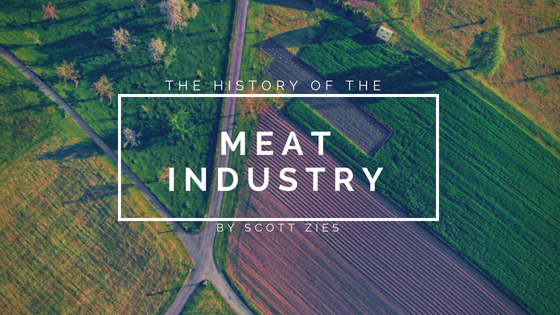Meal planning is taught in school as early as 3rd grade. Students are shown an infographic that shows how much of each food category is needed on your plate each meal. From an early age we are taught what we need and how to get it but rarely do we focus on the years of evolution that led to the easy consumption of meat.
In the age of the caveman, communities relied on the strongest to hunt and provide food for all. At first, the hunters were equipped with sharpened sticks; as they evolved, they’re tools developed and hunting became less demanding.
However, by the early 1800s, the large buffalo, elk, and deer had been spread extremely thin. This lead to the development of European and British domesticated herds and flocks, such as pigs, sheep, and cattle, creating a more dependable food supply in the U.S. Ninety percent of the population lived on farms in 1800, compared to the two percent of today. Families would spend most of their time producing clothing, shelter, and food.
While animal husbandry (or the science of caring and breeding farm animals) had become commonplace for the average farm and family, government leaders believed that efficient agriculture was needed to develop a great nation. Legislation and developments were created and implemented leading to the animal-production industry of today. Some of these enabling acts included the Homestead Act of 1862 (encouraged development of family farms), Morrill Act of 1862 (founded the State Agricultural Experiment Stations), and the Smith-Lever Act of 1914 (established the Cooperative Agricultural Extension Service).
By 1865, the Chicago Stockyards became the nation’s leading livestock market. Chicago, Kansas City, Cincinnati, Omaha, and Philadelphia were central marketing points for the development of the meat-packing industry. As the railway system incorporated the refrigerated railroad car, the sale of meat by processors to retailers across many states led to the recognition of value preferences. By 1906, consumer protection from meat unfit for consumption was declared in the Meat Inspection Act.
By 1947, the American Meat Institute Foundation began operations as an independent organization that researched livestock production, processing and utilization. In the 1960’s, the association increased from 30 to 400, and over the course of several decades, the association has reached nearly 1000 members today. As the independent organization it has become, the American Meat Science Association provides objective information through research and education for the livestock and meat industry, as well as for consumers.
Meat science is now a fundamental element in U.S. society, as well as around the world. As Committee chairman Kinsman from the Reciprocal Meat Conference (1972) declared, “In the evolution of every great institution there is generally a need, or an idea, followed by a period of development, and an era of maturation before it establishes its place in history.”
Throughout hundreds of years, U.S. meat science has found it’s place.

